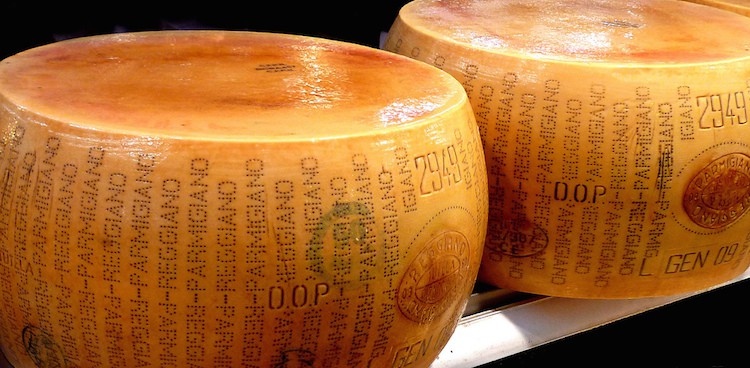
Recently, I came across a list of 27 foods you should never buy again. Yes, I know, it’s just click bait, but I still couldn’t help myself from scrolling through. The number one thing on this list? Parmigiano Reggiano cheese. I don’t expect the folks at Reader’s Digest (who published the list) to be supremely knowledgeable on the subject of cheese, but Parmigiano Reggiano is arguably one of the most well-known cheeses in the world. So why should we supposedly slice it off our grocery lists? Here’s the rationale from Reader’s Digest:
A few shavings of nice cheese on top of pasta or vegetables can take a simple dish from good to great—but you don’t have to fork out $22 a pound for the famous stuff. Instead, look for varieties like Pecorino Romano and SarVecchio, which offer the same flavor at half the price.
Let’s get one thing clear right off the bat — Pecorino Romano and SarVecchio are fabulous cheeses in their own right, but they’re not Parmigiano Reggiano. Although many pasta recipes will suggest using Parmesan or Pecorino interchangeably, the fact is these are two completely different cheeses with vastly different flavor profiles. After all, they’re made with the milk of two different animals! And as for SarVecchio, its flavor profile is different from Parmigiano Reggiano as well — expect more toasty, buttery notes in the former, likely a result of the whole milk used in the make process (Parmigiano Reggiano uses whole and skim milk).
And speaking of make process, Parmigiano Reggiano’s is strictly regulated by its PDO status. PDO, or Protected Designation of Origin, is utilized in the EU as a way to promote and protect quality agricultural products like cheese, wine, Balsamic vinegar, and more. Parmigiano’s PDO status is literally a stamp of quality — its rind is embossed with a pin dot pattern that details the cheese’s date of production and where it was made, provided the wheel passes inspection by a consortium member.
When I want Parmigiano Reggiano, I’m absolutely willing to pay for its guarantee of quality — and when I want Pecorino or SarVecchio, their price points are the last thing on my mind when I’m crafting a cheeseplate or cooking up some pasta. What about you? How different is too different when it comes to grating cheeses? Does price play a role in your cheese purchases? Tell us in the comments!



